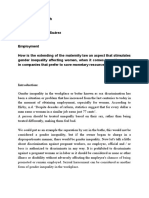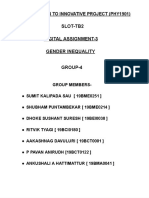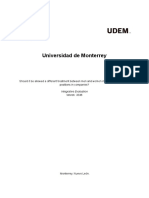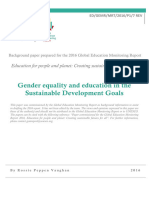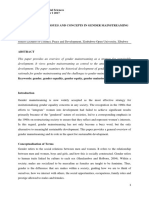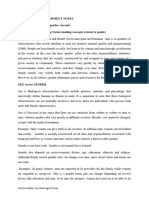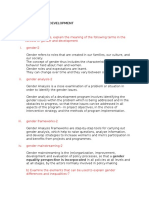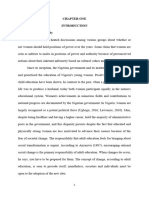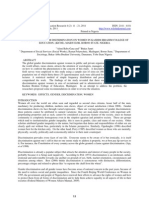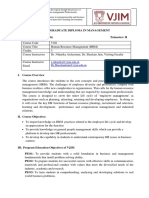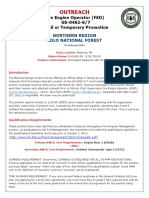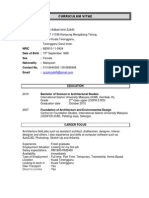0% found this document useful (0 votes)
44 views7 pagesChapt 1 Nugwa
This summary provides an overview of gender differences in career advancement based on a review of literature on the topic:
- Women face greater barriers than men in advancing their careers, including difficulties getting development opportunities and access to leadership positions. This is due to gender roles and stereotypes that favor men.
- Studies show disparities between men and women in academic positions worldwide, with men dominating higher level and management roles. In many countries, including Nigeria, women make up a minority of university faculty and administrators.
- While laws and policies aim to promote gender equality and prohibit discrimination, in practice women face challenges such as marginalization, exclusion, sexual harassment and lack of support for career progression in universities. Available data on
Uploaded by
oluwasegunnathaniel0Copyright
© © All Rights Reserved
We take content rights seriously. If you suspect this is your content, claim it here.
Available Formats
Download as DOCX, PDF, TXT or read online on Scribd
0% found this document useful (0 votes)
44 views7 pagesChapt 1 Nugwa
This summary provides an overview of gender differences in career advancement based on a review of literature on the topic:
- Women face greater barriers than men in advancing their careers, including difficulties getting development opportunities and access to leadership positions. This is due to gender roles and stereotypes that favor men.
- Studies show disparities between men and women in academic positions worldwide, with men dominating higher level and management roles. In many countries, including Nigeria, women make up a minority of university faculty and administrators.
- While laws and policies aim to promote gender equality and prohibit discrimination, in practice women face challenges such as marginalization, exclusion, sexual harassment and lack of support for career progression in universities. Available data on
Uploaded by
oluwasegunnathaniel0Copyright
© © All Rights Reserved
We take content rights seriously. If you suspect this is your content, claim it here.
Available Formats
Download as DOCX, PDF, TXT or read online on Scribd
/ 7










